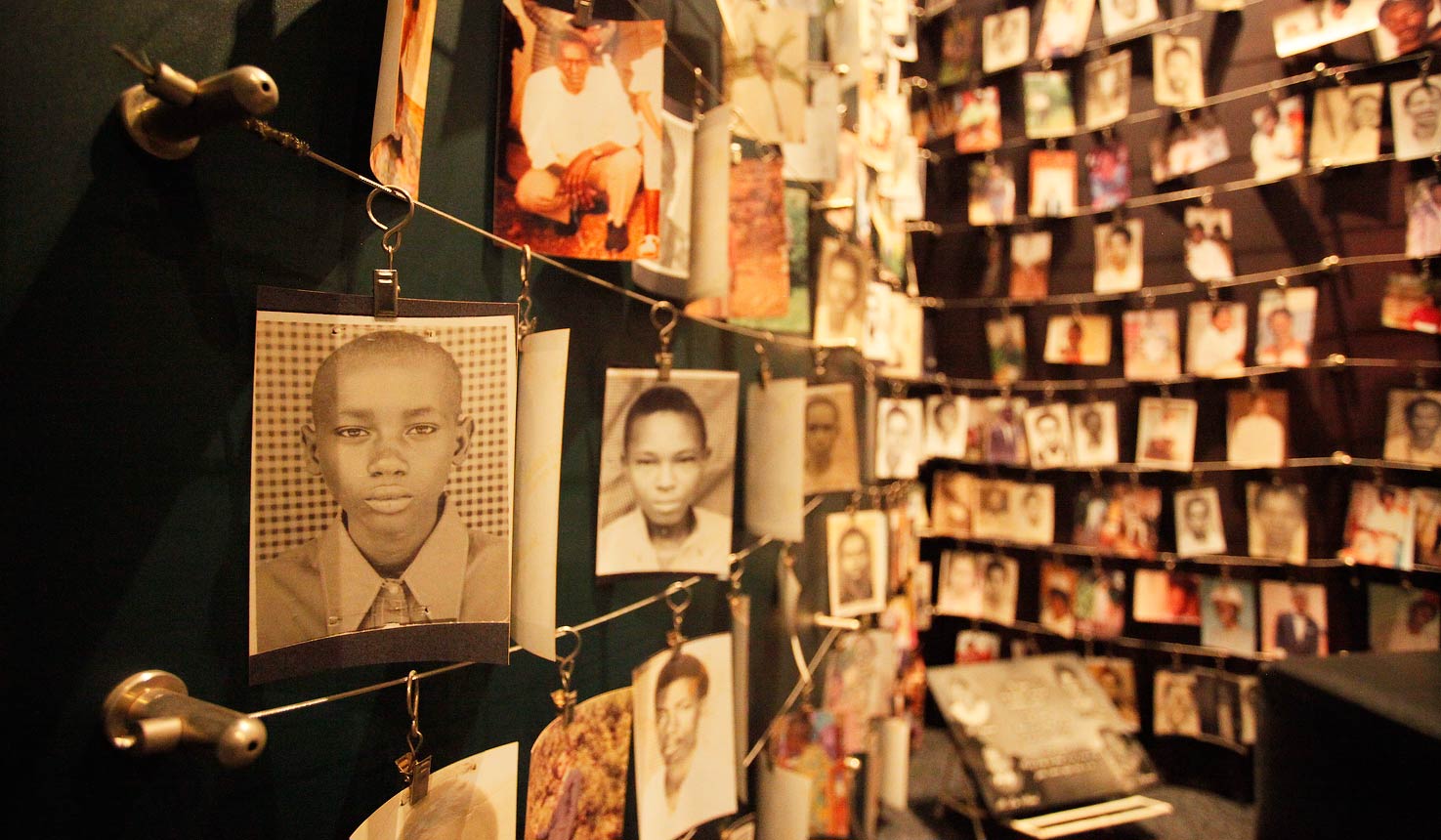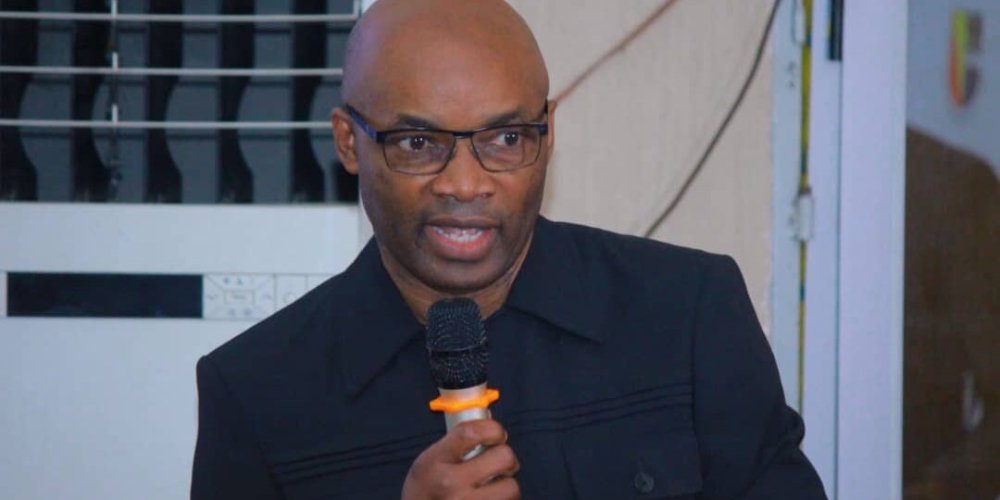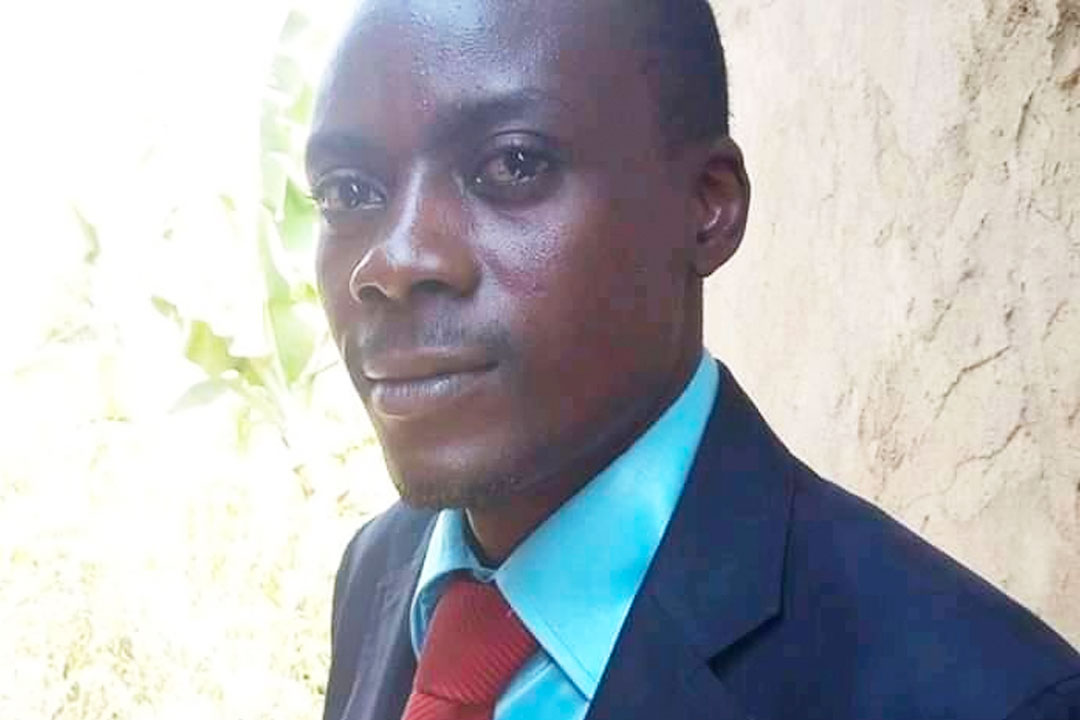The crimes that were committed, mainly in Rwanda and the Democratic Republic of Congo from 1 October 1990, against Rwandans, Hutus and Tutsis cannot be summed up in a single word or assigned a specific name without the risk of globalising and falsifying history indefinitely.
An all-encompassing term for all these crimes?
At present, the terms used for the crimes that were committed in Rwanda against the Tutsis or against the Hutus are disparate, contradictory and often depend on the immediate interests and subjective viewpoint of whoever is speaking.
The question of labelling the crimes that were committed against the Tutsis or the Hutus in Rwanda is undoubtedly the issue that most divides all those who are interested in Rwanda, starting with the Rwandans themselves.
Some thus consider that it would constitute a “Rwandan genocide”.
Others argue that it was a “double genocide”.
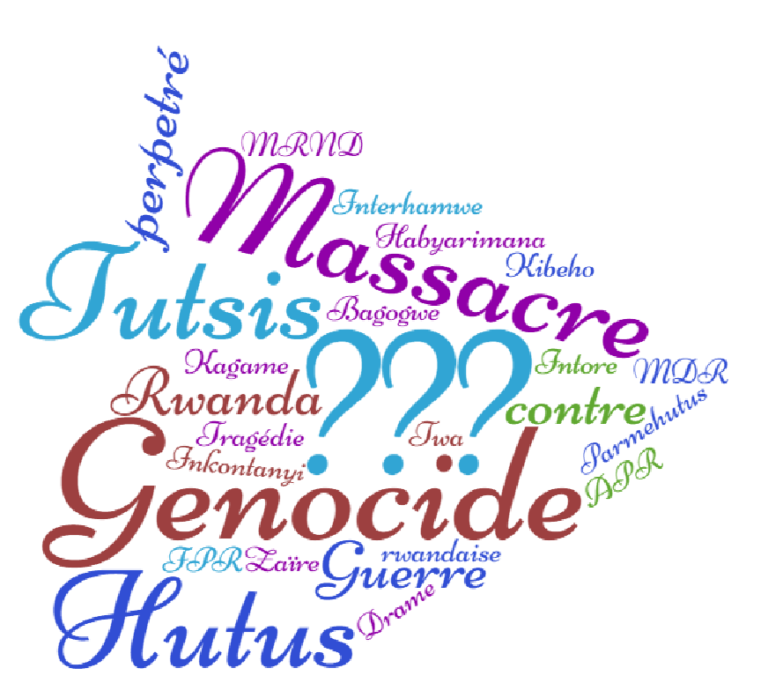
Some people think that the only “genocide” was that of the Tutsi and sometimes admit that there were also “massacres of Hutus”.
Today, the most resolute refer to “two genocides”, a “genocide of the Hutus” or “against the Hutus” and a “genocide of the Tutsis” or “against the Tutsis”.
Most conservatives stick with a “Rwandan tragedy” or a “Rwandan disaster”.
The more traditional simply speak of a “civil war” that becomes a “war of reclaiming power” or “of occupation” for some, “of liberation” or “of aggression” for others, completely obscuring the crimes that were committed during this war.
For the most imaginative, the genocide committed against the Hutus would be a “counter-genocide” or a “selective genocide”.
Sometimes, some speak of “war crimes”.
The more removed are content to talk about “inter-ethnic massacres” and sometimes even “tribal struggles”.
Others are still using the incoherent term of a “genocide of the Tutsis and moderate Hutus” that was followed by “reprisals and abuses against Hutus”.
This term is incoherent because a genocide, the essential element of which is the desire to destroy a national group as a whole, cannot have been committed by the same perpetrator at the same time against both Tutsis and Hutus, even if the latter were to be regarded as moderate.
This term is incidentally the only one, among all the confusing terms that exist, to attribute a characteristic to the victims, already categorised according to their “ethnicity”, by referring to them as “moderate Hutus”. The incredibly harmful consequence that this term undoubtedly, but necessarily, leads to is that the “Hutus”, without further qualification, were not moderate or, worse, were not victims.
A new low is reached when some define the “moderate Hutus” as being those who refused to take part in the massacres, thereby implying that the Hutus who were not victims of the Interahamwe are those who agreed to take part in the genocide of the Tutsis.
And when they sometimes manage to agree on the term itself and the identity of the victims, few are able to agree on the identity of the perpetrators of these crimes.
Correctly identifying the perpetrators of these crimes
In fact, it is in relation to the identity of the perpetrators of these crimes that the controversy and tension in this debate are most acute, since the perpetrators of these crimes naturally try to evade their responsibilities by wanting, at best, to be mistaken for the victims or, at worst, to smear their victims and reverse the responsibilities.
Thus, the term given to the perpetrators of these crimes comes dangerously and most often from ethnic categories such as “Tutsi extremists”, “Hutu extremists”, “Hutu militia”, “Tutsi killers”, “Hutu regime” or “Tutsi rebels”.
Some do not even bother themselves and simply refer to the criminals as “Tutsis” or “Hutus”, without any other qualifying adjectives.

How do you expect a child who has grown up surrounded by a discourse that refers to “Tutsis” or “Hutus” as those who killed his or her own people not to develop a fear and automatic hatred against these “Tutsis” or these “Hutus”?
But other widely used terms, equally and dangerously confuse ethnic and political categories by designating the perpetrators of these crimes as “Hutu extremists of the MRND and CDR” or “Tutsi extremists of the RPF”.
Perhaps the most critical and dangerous terms are those which, in addition to stigmatising an ethnic group as perpetrators of the crime, associate this ethnicity with a term that is laced with political propaganda, such as when certain people blithely talk about the crimes committed by a so-called “Hutu Power regime” that never existed.
There is no doubt that those who come close to the truth, and perhaps the only terms acceptable to the Rwandans for future generations and reconciliation, are those which attribute the crimes to their perpetrators without referring to the ethnicity of the latter but instead only to the political and/or military group to which they would have belonged such as “the Inkotanyi” or “the Interahamwe”.
However, confusion can only be overcome if globalisation or at least ethnic categorisation is avoided and the focus is placed on holding the perpetrators of these crimes fully and personally responsible rather than stigmatising their ethnicity, which is inherently a matter of who they are and not of what they may have done.
Some accuse each other of denialism, but they all start from the same hard-to-contest reality that there have been more than two and a half million Rwandan deaths in the Great Lakes region over the last 25 years, most of whom were Hutus.
It is difficult to know the exact number of victims, but the figures themselves divide opinion without identifying the crimes that have been committed and their perpetrators.
In reality, this persistent division between us all on how to name these crimes and identify their perpetrators or the victims is, for those who are acting in good faith, the product of much confusion and opinion, both about the facts themselves and about the legal definition – the only reference – of the crimes in question.
What crimes were these?
It is therefore appropriate to identify first of all what happened, where and when, at the same time as checking which term these facts, as they happened, may correspond to.
Identifying what happened must necessarily be limited geographically and over a period of time while focusing the analysis on the Rwandan victims, and especially on Tutsis and Hutus. While many crimes were committed against the Twas, the terms used to describe these crimes are not the subject of controversy.
In terms of time period, one could go back a long way in Rwanda’s history and revisit all the victims of the past, however the date of 1 October 1990 is pivotal and an appropriate starting point for the observation period.
While no one can dispute that the breeding ground for the hatred and violence lies in Rwanda’s earliest history, it is a fact that its last outbreak occurred on this date, which corresponds to the beginning of the fratricidal war unleashed by the RPF against Rwanda.
In this regard, it seems essential to remember that all the crimes committed were committed mostly during times of war in Rwanda or in the Democratic Republic of Congo.
As for the territories in which these crimes were committed, it seems appropriate to limit them – in the context of this examination – to those of Rwanda and the Democratic Republic of Congo, which are by far the countries with the greatest number of victims.
The analysis could indeed be extended to other African countries, such as Zambia, Kenya, Cameroon or South Africa, or even to European countries such as Belgium, where Rwandans were notoriously murdered for political reasons.
Given the critical point of this debate, it is essential to focus primarily on the Rwandan victims, namely the Hutus and the Tutsis. However, this does not obscure the fact that there were many foreign victims, including Congolese, Burundian, Belgian, French, Spanish, Canadian and several other nationalities.
It is important to limit the debate so that it is does not become compromised by certain sensitive issues, wherein interlocutors with different backgrounds vehemently oppose each other without realising that they may not be talking about the same thing.
It is a fact that the tribute paid to the victims or the political weight associated with these victims sometimes depends on the nature of the crime they suffered and the official term given to it.
It is now public knowledge around the world that the term genocide is emotionally and politically the most striking.
More than any other, it evokes compassion for those who suffered as well as international political solidarity with their respective communities.
Thus, an examination of the facts in this context clearly shows that the following five categories of crimes were committed: genocide, crimes against humanity, war crimes, political assassinations and ordinary crimes.
These necessarily need to be looked at one by one and on the basis of the victims, about whom there is no question and who are the centre and purpose of any crime.
Before that, however, it seems essential to first remind ourselves what “genocide”, “crimes against humanity” and “war crimes” (so-called crimes of international humanitarian law) mean in legal terms.
It does not seem necessary to define what is meant by “political assassinations” and “ordinary crimes” as their meaning seems more obvious.
Article 2 of the 1948 Convention on the Punishment of the Crime of Genocide, the terms of which are identical in all subsequent national or international texts, defines genocide as the intent to destroy, in whole or in part, a national, ethnical, racial or religious group, as such, either by killing members of this group or by causing serious bodily or mental harm to members of the group, or by deliberately inflicting on the group conditions of life calculated to bring about its physical destruction in whole or in part, either by imposing measures intended to prevent births within the group or by forcibly transferring children of the group to another group.
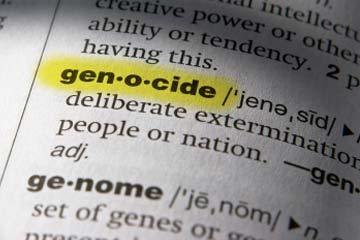
In the light of the above legal definition, it is immediately easy to see that two long-held misconceptions remain today about the constituent elements of the crime of genocide: that genocide can only occur if it is the work of a State with a government and that genocide must necessarily be planned.
These are two misconceptions that are totally false but that persist in the collective imagination, to the point that even the debates held before the International Criminal Tribunal for Rwanda focused for a long time on the question of the responsibility of the State and the government and/or on the question of planning. However, these two elements are not conditions required for a genocide to occur.
The third widespread misconception is that genocide consists of wanting to destroy the entire group in question, whereas the definition of genocide also refers to wanting to destroy only a part of the group.
With regard to crimes against humanity, Article 7 of the Statute of the International Criminal Court, which was signed in Rome on 17 July 1998 and entered into force on 1 July 2002, provides a fairly comprehensive definition of the crime, which can be understood as a general and systematic attack on a civilian population that the perpetrator, inter alia, kills, exterminates, imprisons, tortures, persecutes or subjects to inhuman acts intentionally causing great suffering or serious bodily or mental harm.
In view of this definition, it can be seen that the material acts constituting crimes against humanity are not of a lesser degree than those which may constitute genocide, but are of the same nature and are listed even more comprehensively.
The difference between genocide and crimes against humanity therefore lies in the intention of the perpetrator who must, in the case of genocide, have the intention of destroying a group in whole or in part, whereas that intention is not required for crimes against humanity, even though the latter is often dictated by political, racial or religious motives.
War crimes are defined in Article 8 of the Statute of the International Criminal Court, which itself refers to the Geneva Conventions of 12 August 1949, which protect property and persons in time of war against a party to the conflict.
War crimes are defined in an even more complex way than crimes against humanity, but it can be stated quite simply that they include, in the event of armed conflict, crimes against humanity as defined above, committed by a party to the conflict, to which must be added the specific attacks that may be committed in time of war by a party to the conflict against prisoners, the wounded, the sick, emergency services or persons and property that are not taking part in the conflict.
In the specific case of Rwanda, the two parties to the conflict were the government of the Republic of Rwanda and the Rwandan Armed Forces (FAR) on the one hand, and the Rwandan Patriotic Front (RPF) and the Rwandan Patriotic Army (RPA) on the other.
Crimes of genocide
If we look at the issue of genocide first of all, and take the case of the Hutu victims as an example, the famous Mapping Report (from the Office of the United Nations High Commissioner for Human Rights released in August 2010 concerning the most serious human rights and international humanitarian law violations committed between March 1993 and June 2003 in the Democratic Republic of the Congo) alone shows that there was genocide against the Hutus in the refugee camps in Zaire, since the acts committed against the Hutus in those camps fall within the definition of genocide.
In this case, the intention of the RPA through Laurent Kabila’s Alliance of Democratic Forces for the Liberation of Congo (ADFLC), between October 1996 and the beginning of 1998, was to kill the Hutus who had remained in Zaire and could not be forcibly repatriated to Rwanda, or else intentionally subject them to living conditions that would lead to their total or partial destruction.
The Hutu refugees in the Congo who could be apprehended by the RPA during this period were exterminated regardless of their age or sex, over more than 2000 km of Congolese territory up to the border with Congo-Brazzaville (the Republic of Congo).
If we adhere to the definition of the term genocide, there was also genocide against the Hutus in Rwanda from 1991, but especially in 1994 and 1995, therefore before the refugee camps were attacked in 1996.
Hutus were killed by the RPA in 1991 in the northern part of the country, in the former prefectures of Byumba, Ruhengeri and Gisenyi, in 1994 in displaced persons camps such as the Nyacyonga camp, and in 1995 in displaced persons camps dotted around the country, mainly in the west, from north to south, even if its intention was not, on Rwandan territory, to destroy the Hutus in their entirety.
The condition of wanting to destroy the group in its entirety is not required by the definition of genocide, which only requires the perpetrator to intend to destroy part of the group.
The genocide committed against the Hutus was committed by a political and military movement that did not act through a State, namely the RPF, but it did continue with the same political and military movement through the State after the RPF seized power in July 1994.
The fact that none of the perpetrators of the genocide committed against the Hutus have ever been brought to justice does not mitigate or erase the nature of the crime.
On the contrary, what is undoubtedly the most abnormal thing about this genocide is the fact that none of its perpetrators has yet been prosecuted.
Some even argue that until a court has confirmed the existence of a genocide committed against the Hutus, such genocide does not exist, which is, of course, absurd.
Moreover, the UN Security Council resolution 955 of 8 November 1994 establishing the International Criminal Tribunal for Rwanda did not limit its jurisdiction to crimes committed against the Tutsis alone.
On the contrary, it was intended to try those allegedly responsible for serious violations of international humanitarian law committed in Rwanda and neighbouring countries between 1 January 1994 and 31 December 1994.
It was therefore only for political reasons that the Office of the Prosecutor at the International Criminal Tribunal limited its prosecutions to the genocide committed against the Tutsis, without prosecuting those responsible in the RPF for the crimes that had already been committed against the Hutus at the time the International Criminal Tribunal for Rwanda was established.
As far as the Tutsis are concerned, there was a genocide of the Tutsis at least from April 1994 onwards, and perhaps before that if we look at what happened against the Bagogwe community in 1992, a Tutsi population in northern Rwanda that was decimated.
In this instance, the Tutsi genocide was not planned, but it should not be assumed that the absence of planning would have the effect of removing the crime’s genocidal character.
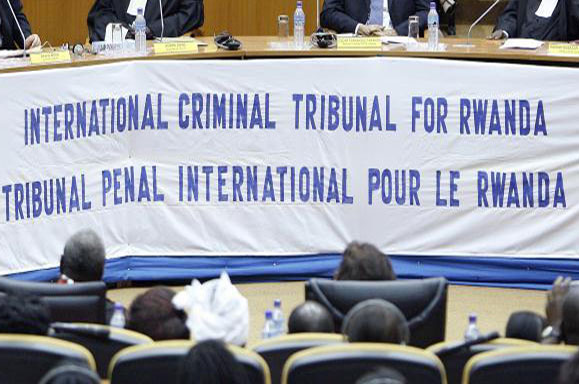
This reality disturbs many propagandists who strive to defend the idea of planning that does not result from anything specific.
In some circles, this propaganda is the only version of the facts that has been circulated, while the lack of planning for the genocide of the Tutsis is a reality that is obvious.
This reality has also been confirmed by the unequivocal findings that the International Criminal Tribunal (ICTR).
The genocide of the Tutsis was not planned, at least not by those who were convicted, by the ICTR in particular, of committing it, since the ICTR expressly acquitted all defendants of the specific charge of conspiracy to commit genocide.
The decisions of the ICTR were not required to be able to conclude that the genocide of the Tutsis was not planned, rather this is perfectly clear from the facts themselves.
It seems strange, to say the least, to maintain that the chaotic and totally uncontrolled way in which the genocide of the Tutsis was committed was planned, with the trigger event being the attack on President Juvénal Habyarimana’s plane, which wholly contradicts the theory that he and his supporters planned the genocide themselves.
In fact, this planning theory was developed by the political propaganda wing of the RPF, during and after their seizure of power, which believed that planning had to be demonstrated in order to be able to call it genocide, whereas this is not the case: genocide does not have to be planned to qualify as genocide.
The absence of planning does not detract from the intrinsic seriousness of the crime itself.
The decisions of the ICTR, which cannot be accused of complacency towards those it tried, seriously undermined the planning theory that the RPF had developed to discredit its political enemies and justify its total seizure of power in Kigali by force.
The theory that the genocide of the Tutsis was planned is so absurd that those who developed it went so far as to cite, as evidence of this planning, facts which in themselves demonstrate that there could not have been any planning.
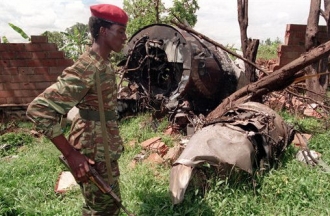
For example: the genocide of the Tutsis followed shortly after the attack on President Juvénal Habyarimana’s plane on 6 April 1994 and, more importantly, the widespread military offensive launched by the RPF on all fronts at dawn on 7 April 1994. Logically, this immediately rules out that this genocide could have been planned by President Habyarimana and his supporters.
But the political propaganda of the RPF and its foreign representatives is such that it has succeeded in developing, for almost 23 years now, an utterly incredible theory in which President Habyarimana’s plane was in fact shot down by his supporters, including his wife, in order to carry out the genocide of the Tutsis that they had been planning for a long time.
According to this implausible hypothesis, President Habyarimana even had a disagreement with his supporters, who decided to eliminate him in order to be able to carry out this genocide, which he himself opposed at the last minute.
In this propaganda, it was therefore necessary to find a “brain” for the genocide among those who tried to take matters into their own hands with the interim government put in place after 6 April 1994, except that the person to whom the planning of the Tutsi genocide was attributed was acquitted by the ICTR of the charge of conspiracy to commit genocide.
Another aspect that shows that there was no planning of the Tutsi genocide by the government in place before 1994 is the way in which the Tutsi genocide was perpetrated, that is, by hordes of militiamen and civilians attacking with knives in complete and utter chaos with victims most often found in their places of refuge or flight.
Yet this aspect is used by the propaganda machine of the RPF to support the planning theory, going so far as to invent the extraordinary hypothesis that the State ordered millions of machetes from China to carry out a genocide against the Tutsis.
It is obvious that a State that was planning to carry out genocide on part of its population would probably have done so in a structured and methodical manner.
The government would probably have carried out the crime with the approximately 50,000 men in the armed forces, gendarmerie and police force.
The security forces would probably have used firearms or criminal methods that were more effective than knives and certainly would not have advertised it quite as much.
This does not mean that there were no FAR soldiers or gendarmes who participated in the Tutsi genocide; there were, but absolutely not as part of any planning that would have been done at the State level, whether before or after 6 April 1994.
The ICTR finally acquitted the majority of the most senior military officials from the gendarmerie and armed forces who were in post before and after 6 April 1994.
This leads directly to the thorny issue of identifying the perpetrators of the genocide of the Tutsis who are not and cannot be “the Hutus” in an overall and general sense.
While the perpetrators of the genocide committed against the Hutus are easily identifiable and were, moreover, organised to carry it out within the RPF and more specifically within the RPA, its armed wing which was methodical and effective in its execution, the perpetrators of the genocide committed against the Tutsis were much more difficult to identify because they were not grouped under a particular political or military banner.
Although civilians were able to organise themselves and participate in these crimes, they did not do so either in the name of their entire ethnic group or as Tutsi or Hutu.
As much as it is incongruous to attribute the crimes committed by the RPF to the “Tutsis”, it is equally incongruous to attribute the crimes committed by the Interahamwe militia to the “Hutus”.
Moreover, even the fact of identifying the Interahamwe as the perpetrators of the genocide is not strictly accurate if this targets the MRND party’s youth membership, because that would be tantamount to unfairly attributing responsibility for the genocide to that party, whereas the meaning of the word Interahamwe after 6 April 1994 referred to all those who organised themselves under that banner without any control.
Many of the individuals who claimed, before 6 April 1994, to be youth members of other political parties (the Impuzamugambi of the Coalition for the Defence of the Republic (CDR) party, the Inkuba of the Republican Democratic Movement (MDR) party and the Abakombozi of the Social Democratic Party (PSD)), initially and formally launched to fight the RPF after 6 April 1994, committed numerous crimes between April and July 1994 and in particular the genocide against the Tutsis.
However, the fact of belonging to the Interahamwe as a young politician of the MRND, before or after 6 April 1994, does not of course mean that one is a criminal, because criminal responsibility must, whatever happens, always be assessed individually, especially since, in this particular case, the president of the Interahamwe before and after 6 April 1994 was himself a Tutsi.
Crimes against humanity
The Hutus were also victims of crimes against humanity committed by the RPF, particularly in Kibeho on 22 April 1995, when the RPA dismantled the camp of nearly 100,000 displaced persons who were there, massacring more than 8,000 refugees with machine guns and heavy weapons as part of a general and systematic attack.
War crimes
Rwandans were also victims of war crimes when these attacks on civilian populations were carried out as part of an armed conflict or when Hutu or Tutsi soldiers were, for example, tortured or killed in this war without prisoners.
New recruits, mostly young Tutsis, from Rwanda and Burundi, who had completed secondary education and joined the RPF after the Arusha Accords but who were assassinated by the Ugandan RPF leaders in the run-up to the final victory, must also be included among other war crimes committed by the RPF.
Another war crime that ended up being trivial in the eyes of Rwandans between 1990 and 1994 was that of the “Kadogos”, or child soldiers, who were recruited by the RPF and were directly involved in the fighting. Some of them had barely reached the age of 10 or 12.
Political assassinations

In addition to these two genocides, crimes against humanity and war crimes, the Tutsis and Hutus were also victims of political assassinations and even ordinary crimes, which is why it is important to make the necessary distinctions.
All the political leaders who were assassinated, whether before 6 April 1994 (Félicien Gatabazi, Emmanuel Gapyisi, etc.), after 6 April 1994 (Ministers Landouald Ndasingwa, Frédéric Nzamurambaho, Boniface Ngulinzira and Agathe Uwilingiyimana, the President of the Supreme Court Joseph Kavaruganda, or the bishops of Gitarama), were victims of political assassinations.
Some of these assassinations have not yet been officially solved, but others were committed either by the presidential guard of President Juvénal Habyarimana after his death on 7 April 1994, or by the RPA, before, during and after its seizure of power.
These political assassinations continued in Rwanda and even abroad, long after the RPF took power (in particular, Théoneste Lizinde in 1996 in Kenya, Seth Sendashonga in 1998 in Kenya, Juvénal Uwilingiyimana in 2005 in Belgium, and Patrick Karegeya in 2013 in South Africa).
These political assassinations, of which the above examples are by no means exhaustive, cannot be included in the three categories of crimes previously described above.

For those who know Rwanda, the ethnicity of these victims of political assassinations was not the reason they were murdered.
These crimes cannot be listed without forgetting the thousands of political assassinations committed by Interahamwe militia against Hutus, known or anonymous, for their actual or supposed collusion with the RPF, mostly between April and July 1994.
But these Hutus, who are those whom the RPF propaganda wanted to call “moderate”, were obviously not targeted as Hutus by the Interahamwe militia and all the other criminals who joined its militia during this dark period of history.
The foreigners who were killed in Rwanda were also victims of political assassinations, being the Spanish missionaries killed by the RPA, the numerous Belgian civilians killed by the Interahamwe militia or the Belgian peacekeepers killed by FAR soldiers.
Ordinary crimes
Similarly, there were never as many ordinary crimes in Rwanda as there were between April and July 1994 as part of the political chaos caused by the resumption of war in the context of genocide and war crimes.
Thus, many criminals took advantage of the situation to loot their neighbours, to kill and rape for purely venal purposes and without political motive, or simply used the political situation as a pretext for committing the most serious crimes under general law.
The situation is therefore very complex, and it is only by accurately and completely listing the crimes according to the victims that we can progress towards the last step of identifying those who are responsible for these crimes and achieving justice for all.
Identifying the perpetrators and their exact responsibilities
The RPF, which is currently in power and which obviously does not want its share of these crimes, as a direct perpetrator or instigator, to be exposed, is using all possible propaganda to continue to confuse matters by mixing criminals and victims in a single ethnic category to hide its responsibility.
Another misconception is that the RPF stopped the genocide of the Tutsis.
Historically, there is no claim more false than this, since the RPF’s military objective was not for a single moment to stop the genocide of the Tutsis but simply to win the war after the assassination of President Juvénal Habyarimana.
Moreover, the RPF launched its dawn offensive on 7 April 1994 before the Tutsi genocide began in mid-April 1994, and the testimonies of former RPA soldiers, much like those of Lieutenant Abdul J Ruzibiza and of military personnel present on the ground such as the United Nations peacekeepers’ number two, Belgian Colonel Luc Marchal, demonstrate that the RPF was prepared to attack well before the attack on President Habyarimana.
When the RPF arrived on the scene of its military takeover, which was its main objective, the genocide of the Tutsis was almost over in most of the places where it took place and where the Tutsis could not be protected by the FAR gendarmes in particular, who managed to protect some Tutsis, for example, in the former prefecture of Cyangugu.
Worse still, the testimonies of the RPA soldiers state that they were primarily focused on their military advancement and the crimes they themselves were committing against the Hutu population rather than on stopping the Tutsi genocide.
In terms of logistics, it would have been militarily impossible for the RPF to stop the genocide of the Tutsis, which reached its peak in the country in a matter of days.
Avoiding generalisation and conflation
It is inappropriate to summarise what happened in Rwanda as the “Rwandan genocide” because it leaves it open to a form of generalisation or globalisation that is inaccurate.
No one was killed solely because of their Rwandan nationality (except in the Congo during the 1998 war between Kabila and those who had brought him to power, where Rwandans were hunted down, particularly in Kinshasa).
Summarising everything in terms of the genocide of the Tutsis alone or the genocide of the Hutus alone is nonsense.
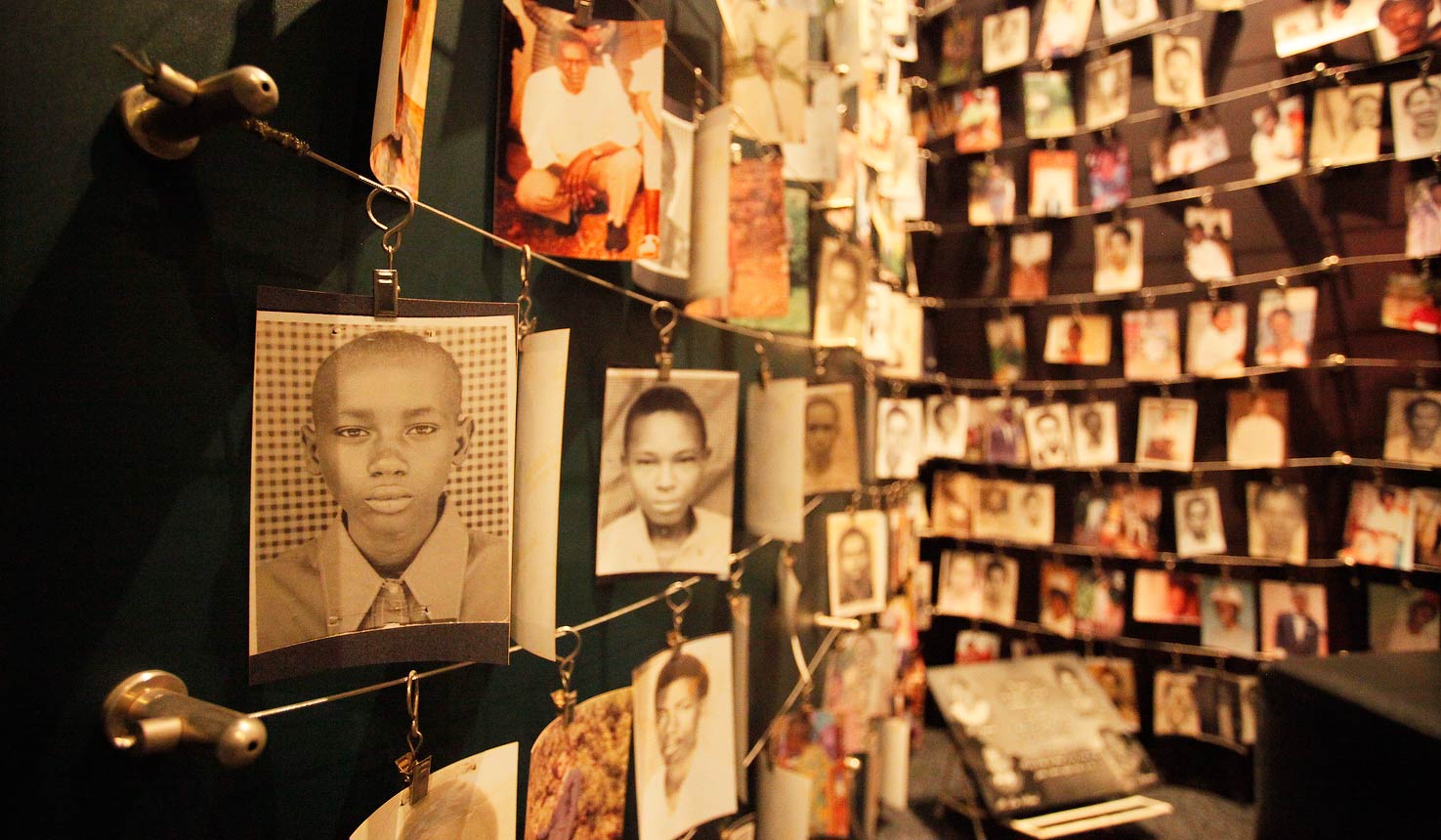
It is true that each interlocutor examines what happened from their point of view and recounts or imposes their truth according to their interests without taking an interest in the truth of others.
However, we must necessarily learn to include all truths in our analyses in order to be able to pinpoint the complete truth about these crimes.
To do this, we must free ourselves from the propaganda and examine things from the perspective of the victims.
The victims are there among the Hutus and the Tutsis; their existence cannot be refuted.
If we do not free ourselves from propaganda to focus on the facts and acknowledge the suffering of all the victims and their equal rights to justice, we will end up nowhere.
Today, for example, there are Hutus who are upset by the mere mention of the genocide of the Tutsis and who sometimes even deny that it happened, because the official propaganda seeks to give credence to the idea that the Hutus were the perpetrators.
This is due to all these descriptions that stigmatise the perpetrators of this genocide in their ethnic group as having been the “Hutus”, the “Hutu power regime”, the “Hutu militia” or the “Hutu genocidaires”, and which have been internalised by many of us.
The designation that refers to the “Hutu power” regime, for example, is particularly insidious because it refers to a regime that never existed.
The only word that ultimately remains in this harmful expression, because it is the only word that corresponds to a specific reality, is “Hutu”, which is unacceptable because it amounts to attributing the genocide of the Tutsis to the Hutu ethnic group as a whole.
“Hutu power” is an expression that has never been used in Rwanda by anyone and is an invention that came straight out of the RPF’s propaganda machine after 1994, which claimed that it was a slogan brandished by militiamen during the war.
Hutu power is no more a reality than the famous Tutsi International Power (TIP) that another propaganda machine had concocted in the late 1990s, but of which no real trace has ever been found.
Many Tutsis and even foreigners who claim to be interested in Rwanda close ranks when the genocide of the Hutus is mentioned and go so far as to argue that claiming that there was a Hutu genocide would be a way of denying the genocide of the Tutsis.ee
We have not forgotten the words of a former President of an organisation that supposedly defends human rights, who stated that “mentioning the blood of the Hutus is defiling the blood of the Tutsis”.
As difficult as it is for us to hear such utterances, it must be understood that they are the result of this propaganda, which creates confusion.
The propaganda is such that it has concluded that those who claim that there were two genocides are denialists, instead of those who deny that there was a genocide of the Hutus.
Stop blaming the Hutus and the Tutsis
Does this mean that no Hutu or Tutsi would have committed these crimes?
No, of course not, the direct perpetrators of these crimes were almost all Rwandans, Tutsis or Hutus. However, this does not justify having to identify the perpetrators by stigmatising the fact that they were Rwandans, Hutus or Tutsis, rather than stigmatising them, at least, through the political and military movements that they joined to commit these crimes.
The confusion stems from the fact that the Interahamwe were primarily composed of Hutus, whereas the RPA was an army composed primarily of Tutsis or in any case dominated exclusively by Tutsis, which opens the doors to conflation.
When we teach confusion and conflation, especially to future generations, it is not surprising that they end up directing their hatred against a particular community.
Symptomatically, it was this kind of terrible conflation that led to the genocide of the Tutsis, since the ongoing propaganda in some circles in Rwanda, shortly before the Tutsi genocide, had equated the Tutsis with RPF supporters.
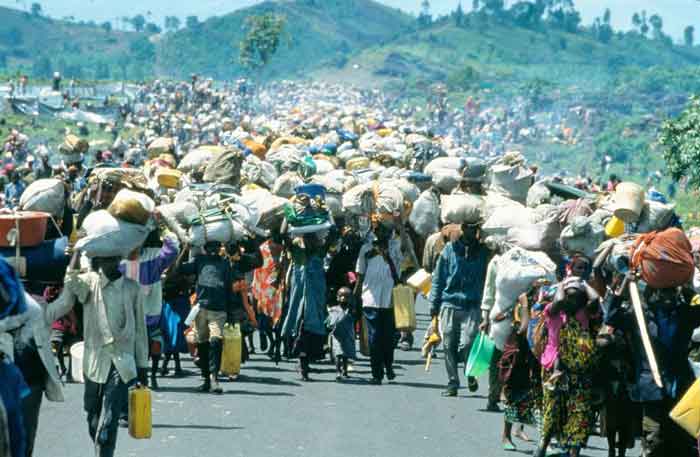
It was this extremely dangerous propaganda that got the upper hand among part of the population after 6 April 1994, when the RPF launched a general offensive to conquer the country and its troops advanced on national territory.
The refugees fleeing the RPF were among the most aggressive Interahamwe, and the genocide against the Tutsis was genuinely fuelled by the RPF’s advancement on the battlefield rather than by the assassination of President Juvénal Habyarimana.
The term “double genocide”, which has sometimes been heard, refers to the idea that a single perpetrator committed two genocides in one; in other words, that the perpetrator committed both a genocide against the Hutus and a genocide against the Tutsis.
This expression does not correspond to anything really concrete, except to return to the erros of the RPF’s first propaganda after 1994, which had successively referred to a “genocide of Tutsis and moderate Hutus” before realising the incongruity of this term.
The RPF’s new discourse today refers only to the “genocide of the Tutsis”, excluding any reference to the Hutu victims, which leaves some of the victims by the wayside, but which is nevertheless more coherent if a genocide is being commemorated.
The term “counter-genocide” has already been used to explain or even justify the genocide committed against the Hutus by the RPF. This, too, is meaningless.
Combating the propaganda that sows the seeds of confusion
The appropriate terms that correspond to the true facts, the historical truth and the legal truth are the terms “genocide against the Tutsis” and “genocide against the Hutus”.
There were therefore two genocides in Rwanda and this is not a “theory” but a historical, factual and legal reality.
It is even less a “negationist theory”, since this reality rightly affirms the existence of two genocides and does not refute them.
Rather, it is the propaganda that turns the reality of the genocide of the Hutus into a “fiction”, while hundreds of thousands of Hutu refugees who lost their own people in Rwanda and the Congo, killed because they were Hutus, are spread throughout Africa, Europe and the rest of the world.
The problem does not even really lie in the question about what exactly happened in Rwanda and how these crimes can be characterised.
It is in fact political propaganda that pits the Tutsis against the Hutus, and vice versa, while the Hutus and Tutsis, as groups, have no conflict between themselves.
At no time in Rwanda’s history have the Hutus or the Tutsis been recruited en masse to fight in a conflict that would have pitted them against each other as groups.
Worse still, this propaganda that breeds confusion is so pernicious that some Tutsis feel compelled to deny that there was a genocide against the Hutus, and some Hutus feel compelled to deny that there was a genocide against the Tutsis in Rwanda.
But the fact that there was a genocide against the Hutus does not prevent a genocide against the Tutsis from occurring, as international justice tribunals and even the national courts of many countries have already examined.
Similarly, it is not because the ruling RPF in Kigali has instrumentalised the genocide of the Tutsis for political purposes, in particular to take power and establish its legitimacy so far, that the genocide of the Tutsis must be denied.
Nor is it because the RPF bears a responsibility for the genocide of the Tutsis, for provoking or even fuelling it, or even for infiltrating the Interahamwe militia, that the genocide of the Tutsis must be denied, put into perspective or played down.
The propaganda is such that we forget that many Hutus were indirect victims of the genocide committed against the Tutsis, and vice versa, especially when a Hutu or Tutsi man saw his wife and children killed just because they were of a different ethnicity from his own.
It is also easier to understand why many Rwandans do not even want to enter this debate: they do not recognise themselves in any of the biased and partisan theories that they are presented with and that make them or their close relatives out to be genocidaires when in fact they are only victims.
There are very few Rwandan families that do not include both Hutus and Tutsis or that do not include both victims of the Inkotanyi and victims of the Interahamwe.
There is no competitiveness between these two genocides and even less so an actual competition between them.
Accept the truths of all the victims
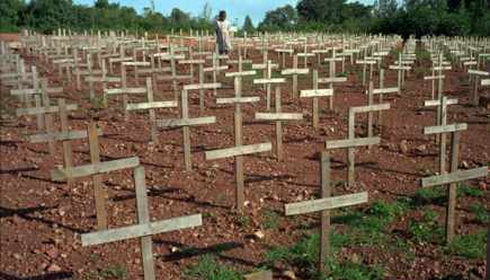
Every Rwandan must finally admit that we have different histories and that it is impossible to deny indefinitely the crimes that were committed against other Rwandans.
The genocide committed against the Hutus concerns the Tutsis as much as the genocide committed against the Tutsis concerns the Hutus.
There is no ban on a Tutsi commemorating the genocide committed against the Hutus and demanding justice for the Hutus, nor is there anything preventing a Hutu from expressing an interest in the genocide committed against the Tutsis and condemning the perpetrators.
Rwandans need to be concerned about these crimes as Rwandans and not as Hutus or Tutsis, even though the relationship that one has with a genocide committed against one’s own community cannot of course be the same as the relationship that one has with a genocide committed against another community.
The important thing is not to fall into the trap of conflation and denial of the other.
Conflation and denial of the other sometimes leads to particularly perverse shortcuts, such as when a journalist gave her resounding support to there being one million victims in the Tutsi genocide for one million murderers, this in order to justify the RPF’s crimes against the Hutus, who, of course, comprised these one million murderers.
Finally, those who maintain that this was a civil war are not wrong because all these crimes were provoked by the war waged by the RPF, with the decisive support of Uganda, against Rwanda from 1 October 1990 to 16 July 1994 and which pitted the RPA against the FAR.
Although the outcome of this war was, throughout this period, the primary concern of all Rwandans, especially and paradoxically between 6 April 1994 and 16 July 1994, we cannot reduce what happened to the civil war alone.
Ultimately, Rwandans bear a responsibility for these crimes; however, it goes without saying that foreigners also bear a responsibility for them, either as individuals or as States for their active intervention in, or their apathy towards, these crimes or this war.
Uganda, Belgium, France, the United States, the Democratic Republic of Congo, Burundi, the United Kingdom and Canada are the first to be involved.
Only those who have a vested interest in ensuring that the perpetrators of all these crimes are never tried are the ones who create confusion and try to brainwash future generations, who fail in any case to see themselves in the inconsistent explanations given to them.
And this work of remembrance, recognition and justice is not only incumbent upon Rwandans, it also falls to all those foreigners who are interested in this cause, whether individuals, organisations or public authorities.
By Rudatinya MBONYUMUTWA, Lawyer, member of ARL (Rwandan Association of Luxembourg)
www.jambonews.com
The author is Rwandan and was born in 1975. He has been a direct witness to the recent history of his country, which he has been interested in since a very young age. He was in Rwanda on 6 April 1994 and during the weeks that followed. He would like to point out that this text is the result of more than 23 years of reflection and hindsight during which he has attended numerous conferences and has met with many Rwandan victims, both Hutu and Tutsi. He has acquired and read more than 230 books, not to mention thousands of articles, in other words, virtually all the major works published on Rwanda before and after 1994 by authors from all walks of life. He is a practicing lawyer specialising in criminal law, that he has taught at the University.

